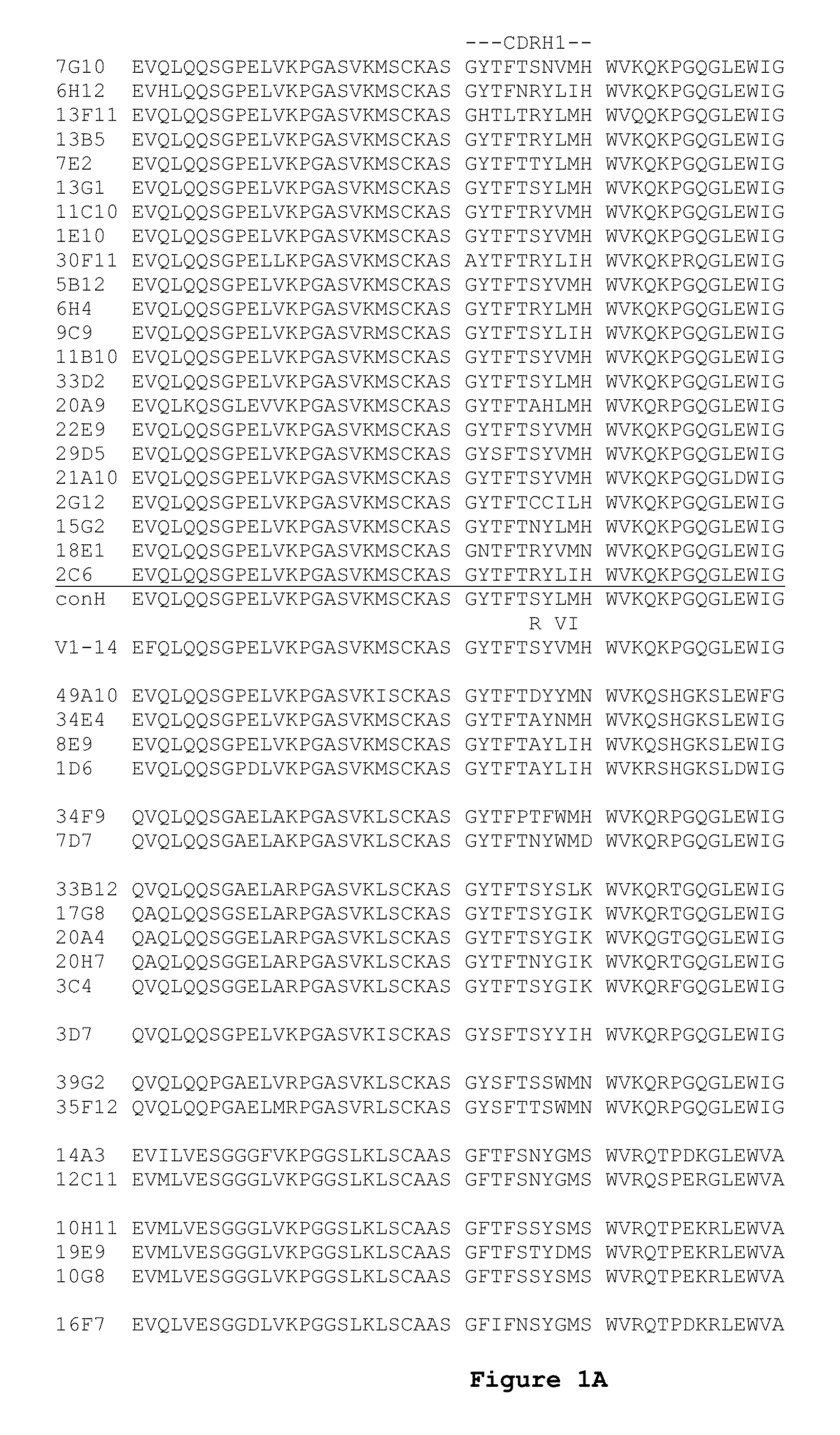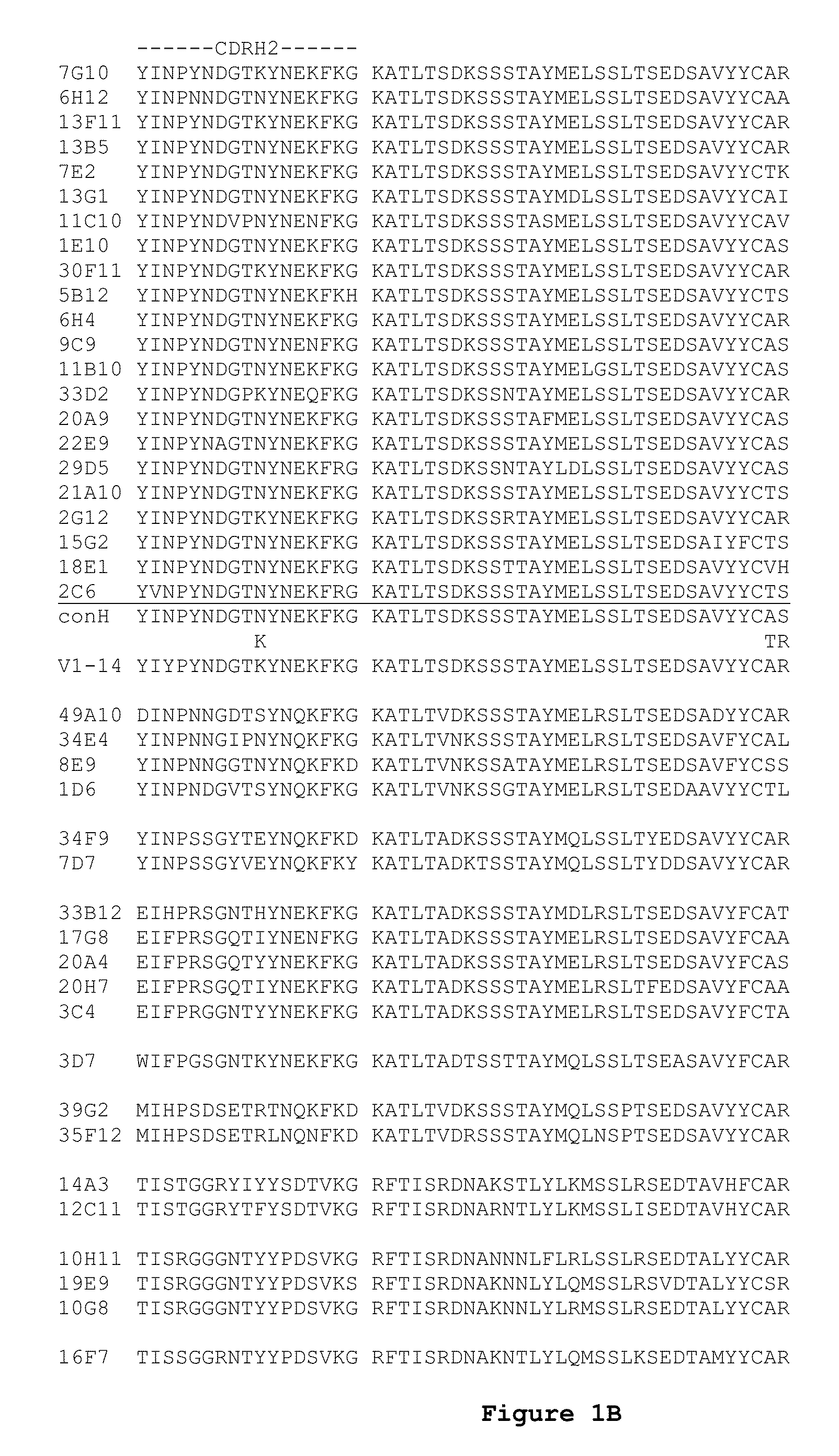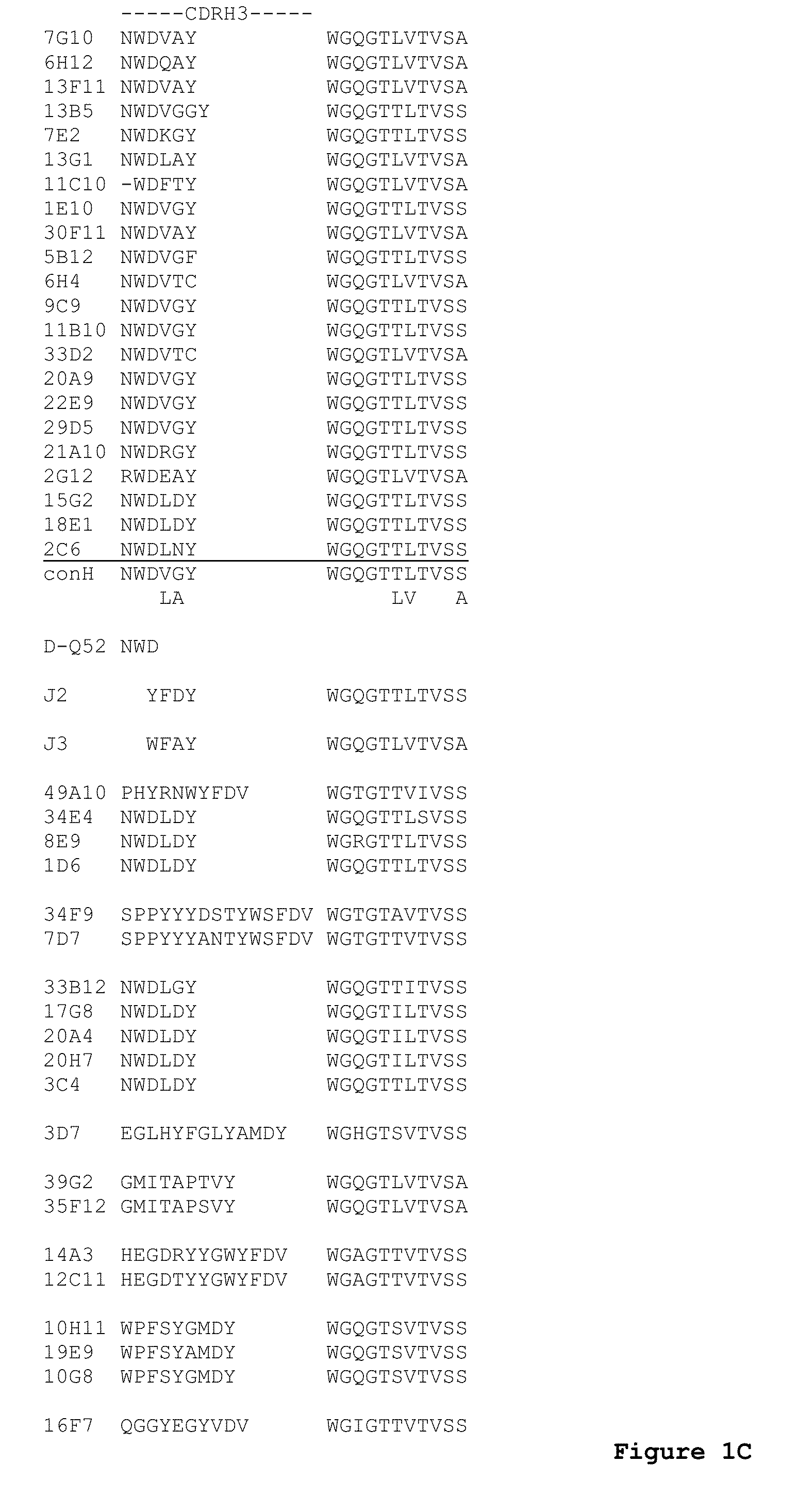Engineered anti-IL-23p19 antibodies
a technology of il-23p19 and specific antibodies, applied in the field of humanized antibodies, can solve the problems of unwanted immunogenicity in patients, loss of therapeutic efficacy at a minimum, and inability to achieve the effect of preventing recurren
- Summary
- Abstract
- Description
- Claims
- Application Information
AI Technical Summary
Benefits of technology
Problems solved by technology
Method used
Image
Examples
example 1
General Methods
[0162]Standard methods in molecular biology are described. Maniatis et al. (1982) Molecular Cloning, A Laboratory Manual, Cold Spring Harbor Laboratory Press, Cold Spring Harbor, N.Y.; Sambrook and Russell (2001) Molecular Cloning, 3rd ed., Cold Spring Harbor Laboratory Press, Cold Spring Harbor, N.Y.; Wu (1993) Recombinant DNA, Vol. 217, Academic Press, San Diego, Calif. Standard methods also appear in Ausbel et al. (2001) Current Protocols in Molecular Biology, Vols. 1-4, John Wiley and Sons, Inc. New York, N.Y., which describes cloning in bacterial cells and DNA mutagenesis (Vol. 1), cloning in mammalian cells and yeast (Vol. 2), glycoconjugates and protein expression (Vol. 3), and bioinformatics (Vol. 4).
[0163]Methods for protein purification including immunoprecipitation, chromatography, electrophoresis, centrifugation, and crystallization are described. Coligan et al. (2000) Current Protocols in Protein Science, Vol. 1, John Wiley and Sons, Inc., New York. Chemi...
example 2
Humanization of Anti-Human IL-23p19 Antibodies
[0167]The humanization of mouse anti-human IL-23p19 antibodies 6H12 and 7G10, was performed as essentially as described in PCT patent application publications WO 2005 / 047324 and WO 2005 / 047326.
[0168]Variable light and heavy domains of selected anti-IL-23 monoclonal antibodies (6H12 and 7G10) were cloned and fused to a human kappa light chain (CL domain) and human IgG1 heavy chain (CH1-hinge-CH2-CH3), respectively.
[0169]The amino acid sequence of the non-human VH domain was compared to a group of five human VH germline amino acid sequences; one representative from subgroups IGHV1 and IGHV4 and three representatives from subgroup IGHV3. The VH subgroups are listed in M.-P. Lefranc (2001) “Nomenclature of the Human Immunoglobulin Heavy (IGH) Genes”, Experimental and Clinical Immunogenetics 18:100-116. 6H12 and 7G10 antibodies scored highest against human heavy chain germline DP-14 in subgroup VH1.
[0170]For all non-human antibodies, the VL s...
example 3
Determining the Equilibrium Dissociation Constant (Kd) for Humanized Anti-human IL-23 Using KinExA Technology
[0177]The equilibrium dissociation constant (Kd) for anti human IL-23 antibodies is determined using the KinExA 3000 instrument. Sapidyne Instruments Inc., Boise Id., USA KinExA uses the principle of the Kinetic Exclusion Assay method based on measuring the concentration of uncomplexed antibody in a mixture of antibody, antigen and antibody-antigen complex. The concentration of free antibody is measured by exposing the mixture to a solid-phase immobilized antigen for a very brief period of time. In practice, this is accomplished by flowing the solution phase antigen-antibody mixture past antigen-coated particles trapped in a flow cell. Data generated by the instrument are analyzed using custom software. Equilibrium constants are calculated using a mathematical theory based on the following assumptions:
[0178]1. The binding follows the reversible binding equation for equilibriu...
PUM
 Login to View More
Login to View More Abstract
Description
Claims
Application Information
 Login to View More
Login to View More - R&D
- Intellectual Property
- Life Sciences
- Materials
- Tech Scout
- Unparalleled Data Quality
- Higher Quality Content
- 60% Fewer Hallucinations
Browse by: Latest US Patents, China's latest patents, Technical Efficacy Thesaurus, Application Domain, Technology Topic, Popular Technical Reports.
© 2025 PatSnap. All rights reserved.Legal|Privacy policy|Modern Slavery Act Transparency Statement|Sitemap|About US| Contact US: help@patsnap.com



